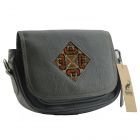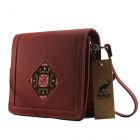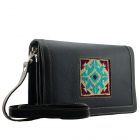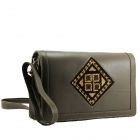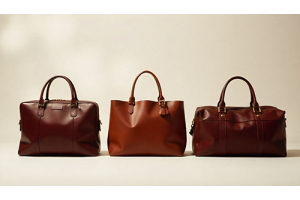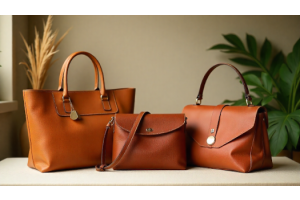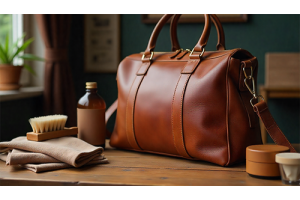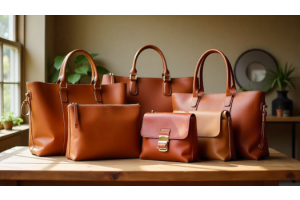Handmade or Factory-Made? Choosing the Right Leather Bag for You
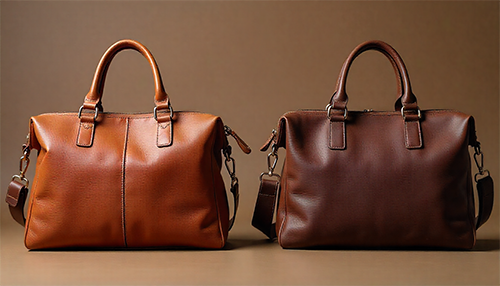
Handmade or Factory-Made? Choosing the Right Leather Bag for You
When it comes to leather bags, the debate between handmade and factory-made is more than just about price — it’s about quality, craftsmanship, and character. A handcrafted leather bag carries a story, shaped by the skill and patience of an artisan, while a factory-made one offers convenience and uniformity at scale. But which one truly fits your lifestyle and values? In this guide, we’ll break down the real differences between handcrafted and mass-produced leather bags — from durability and design to sustainability and long-term value — so you can make a confident, informed choice.
Table Of Content
- Introduction
- Quick Overview: Handmade vs Factory-Made
- Craftsmanship & Quality
- Materials & Leather Types
- Durability & Longevity
- Design, Style & Uniqueness
- Sustainability & Ethics
- Cost, Value & Pricing
- Maintenance & Care Tips
- Who Should Buy Which — Buyer Scenarios
- How to Spot Quality: A Quick Checklist
- Conclusion & Final Recommendation
- FAQ
1.Introduction
When it comes to leather bags, every buyer faces one important choice — should you go for a handmade leather bag or a factory-made one? While both options have their own charm, they differ greatly in craftsmanship, character, and quality. A handmade bag is more than just an accessory; it’s a piece of art shaped by skilled artisans who pour time and care into every stitch. On the other hand, factory-made bags promise consistency, affordability, and fast availability — qualities that appeal to modern shoppers.
At HimalayanBits, we believe that understanding these differences helps you make better, more meaningful choices. This guide explores what truly sets handcrafted and mass-produced leather bags apart — from their materials and durability to sustainability, design, and long-term value. Whether you’re a conscious shopper, a leather enthusiast, or someone looking for the perfect everyday bag, this comparison will help you find what’s right for you.
Tip
Before buying a leather bag, think about what matters most to you — craftsmanship or convenience. If you value uniqueness, durability, and story, go for a handmade leather bag. But if you prefer affordability and consistent design, a factory-made option might be the better fit.
Quick Overview: Handmade vs Factory-Made
Before diving deep into details, it’s important to understand what truly separates handmade leather bags from factory-made ones. Both serve different purposes and appeal to different types of buyers. Handmade bags stand out for their individuality, craftsmanship, and long-lasting quality. Each piece tells a story, often showcasing small imperfections that add character and authenticity.
Factory-made leather bags, on the other hand, focus on speed, consistency, and affordability. Produced using automated machinery and standardized processes, they offer uniform quality at scale — making them accessible to a wider audience. However, this mass-production approach often sacrifices the artistic touch and personalized details that define handcrafted goods.
| Feature | Handmade Leather Bags | Factory-Made Leather Bags |
|---|---|---|
| Craftsmanship | Created by skilled artisans; every stitch reflects care and expertise. | Produced using machines for uniformity and speed. |
| Quality | High-quality materials and attention to detail ensure lasting durability. | May vary depending on production batch and material grade. |
| Design | Unique, limited designs that express individuality. | Standardized styles for mass appeal and availability. |
| Price | Generally higher due to craftsmanship and time invested. | More affordable due to large-scale production. |
| Sustainability | Often made with eco-conscious methods and minimal waste. | Can generate more waste and use synthetic materials. |
This quick comparison highlights one key takeaway — handmade leather bags focus on artistry and individuality, while factory-made bags emphasize accessibility and efficiency. The right choice ultimately depends on your lifestyle, budget, and personal values.
Craftsmanship & Quality
The biggest difference between handmade and factory-made leather bags lies in their craftsmanship. A handcrafted leather bag is a labor of love — every cut, stitch, and finish is done by skilled artisans who understand the behavior of leather. These craftsmen take time to ensure precision, durability, and beauty in each piece, making no two bags exactly the same. The result is a product that feels personal, carries character, and stands the test of time.
In contrast, factory-made leather bags are produced through automated systems that prioritize volume and uniformity. Machines can replicate designs perfectly, but they can’t replicate the human touch. While these bags may look flawless, the lack of manual inspection can sometimes lead to unnoticed material flaws or weak stitching that affects long-term durability.
For those who appreciate authenticity and longevity, the craftsmanship behind a handmade leather bag often outweighs the polished perfection of a mass-produced one. The effort and expertise poured into each handmade piece ensure not only superior quality but also a deeper emotional connection — something a machine could never replicate.
Tip
If you’re investing in a leather bag for the long run, look for signs of hand-stitching, natural leather grains, and small imperfections — they often signal genuine craftsmanship and better durability.
Materials & Leather Types
The choice of leather plays a huge role in determining the quality, texture, and lifespan of a bag. Handmade leather bags are often crafted from premium, full-grain or top-grain leather — the highest grades known for their natural strength, breathability, and beautiful aging process. Artisans carefully select hides that preserve the leather’s natural grain, giving each bag a unique texture and finish. These natural marks and variations make handmade bags one-of-a-kind.
Factory-made leather bags, on the other hand, often use corrected-grain or bonded leather to keep costs down and production consistent. While these materials can look uniform and polished, they’re usually coated or treated with synthetic finishes, which can limit flexibility and longevity. Some mass-produced bags may even use faux or synthetic leather, which mimics the appearance of genuine leather but lacks its durability and rich character over time.
When it comes to sustainability, handmade leather bags typically use ethically sourced or vegetable-tanned leather — a process that avoids harmful chemicals like chromium. This eco-friendly approach not only reduces environmental impact but also produces leather that develops a beautiful patina with age. In contrast, many factory-made bags rely on chemically tanned leather that’s faster to produce but less kind to the planet.
Key Points
Durability & Longevity
One of the most important factors to consider when choosing a leather bag is how long it will last. Handmade leather bags are designed to stand the test of time. Skilled artisans pay attention to every stitch, reinforcement, and seam, ensuring the bag can handle daily wear while maintaining its structure. Over the years, the leather develops a rich patina, adding character and enhancing its aesthetic appeal.
Factory-made leather bags, while convenient and affordable, often prioritize speed and volume over longevity. Machines can produce consistent designs, but corners are sometimes cut on stitching, lining, and reinforcements. This can lead to bags wearing out faster, corners fraying, or zippers and handles failing sooner than a handmade counterpart.
In short, if durability is a top priority, investing in a handmade leather bag usually pays off in the long run. These bags can last decades with proper care, while factory-made options may only offer a few years of reliable use.
points
Design, Style & Uniqueness
Design and style are where handmade and factory-made leather bags really show their differences. Handmade bags are all about individuality — each bag reflects the artisan’s skill and creativity, with subtle variations that make every piece unique. Factory-made bags, in contrast, focus on consistency and trends, producing identical bags in bulk to appeal to a wide audience.
| Feature | Handmade Leather Bags | Factory-Made Leather Bags |
|---|---|---|
| Uniqueness | Each bag is unique due to natural leather variations and artisan work. | Identical designs with minimal variation. |
| Design Creativity | Artisans can experiment with patterns, textures, and finishes. | Designs follow standard templates to maintain uniformity. |
| Customization | Often available for custom requests, monograms, or bespoke options. | Limited customization options due to mass production. |
| Trend vs. Timeless | Focuses on timeless designs that age gracefully. | Often trend-driven and may go out of style quickly. |
Sustainability & Ethics
Today’s conscious consumers often consider sustainability, eco-friendliness, and ethical labor practices as key factors in their buying decisions.
Key Points Covered:
- Material Sourcing: Handmade leather bags often use ethically sourced, vegetable-tanned leather. Factory-made bags may rely on mass-sourced, chemically treated leather.
- Environmental Impact: Handmade bags minimize waste and use eco-friendly processes, whereas factory-made bags can be energy-intensive with higher waste output.
- Labor Practices: Handmade bags support artisans and local communities. Factory-made bags may involve low-wage, high-volume labor with less ethical oversight.
- Longevity: High-quality handmade bags last for decades, reducing environmental impact from frequent replacements.
Cost, Value & Pricing
Key Points Covered:
- Handmade Leather Bags: Typically higher in price due to skilled labor, premium materials, and time-intensive production.
- Factory-Made Leather Bags: More affordable because of mass production, cheaper materials, and standardized processes.
- Value for Money: A handmade bag may cost more upfront but often lasts longer, making it a better long-term investment. Factory-made bags may save money initially but could require replacement sooner.
- Hidden Costs: Maintenance, repairs, and the environmental impact of replacing a cheaper bag frequently.
Maintenance & Care
Leather bags are an investment, and proper maintenance is key to preserving their beauty, durability, and value. This section explains how handmade and factory-made leather bags differ when it comes to care and upkeep.
Key Points Covered:
- Handmade Leather Bags: Typically use higher-quality leather that can last decades if cared for properly. Regular cleaning, conditioning, and storing in a cool, dry place are essential.
- Factory-Made Leather Bags: Often use lower-grade or synthetic leather, which can be more sensitive to wear, cracking, or peeling. Maintenance may require more frequent cleaning or special products.
- Repairability: Handmade bags are easier to repair due to artisanal construction. Factory-made bags may be harder to fix or replace parts.
- Longevity Tips: Avoid overloading bags, keep them away from direct sunlight, and use protective sprays for water and stains.
Who Should Buy Which — Buyer Scenarios
Key Points Covered:
- Frequent Travelers or Professionals: Handmade leather bags are ideal for those who need durability, timeless style, and long-term reliability.
- Budget-Conscious Shoppers: Factory-made bags offer affordability and accessibility without compromising basic functionality.
- Style Enthusiasts: Handmade bags provide unique designs, customization options, and individuality for those who want their bag to stand out.
- Eco-Conscious Buyers: Handmade options are often more sustainable, using vegetable-tanned leather and eco-friendly processes.
- Occasional or Casual Users: Factory-made bags may be sufficient for everyday light use or short-term needs.
How to Spot Quality — A Quick Checklist
Key Points Covered:
- Leather Type: Look for full-grain or top-grain leather for durability and authenticity. Avoid low-quality or heavily coated leather.
- Stitching: Check for tight, even stitches. Hand-stitched seams indicate craftsmanship in handmade bags.
- Hardware: Zippers, buckles, and clasps should feel solid and operate smoothly. Cheap hardware may break easily in factory-made bags.
- Edges & Finish: Smooth, polished edges signal quality. Rough or fraying edges can indicate shortcuts in production.
- Smell & Feel: Genuine leather has a distinct natural smell and soft, flexible texture. Synthetic materials often feel plastic-like and lack aroma.
Conclusion & Final Recommendation
Section summarizes the differences between handmade and factory-made leather bags, helping readers make a confident, informed decision. It reinforces the key factors covered in previous: craftsmanship, materials, durability, style, sustainability, and cost.
Key Points Covered:
- Handmade Leather Bags: Offer superior craftsmanship, unique design, longer lifespan, and sustainable practices. Ideal for those who value quality, individuality, and long-term investment.
- Factory-Made Leather Bags: Offer affordability, consistent design, and accessibility. Suitable for budget-conscious buyers or those needing a bag for short-term or casual use.
- Decision Factors: Consider your lifestyle, budget, environmental values, and how long you expect to use the bag before making a choice.
FAQs
1. What is the difference between handmade and factory-made leather bags?
Handmade leather bags are crafted by skilled artisans using premium leather and reinforced stitching. Factory-made bags are mass-produced, often with lower-grade leather, focusing on uniformity and affordability.
2. Are handmade leather bags more durable than factory-made bags?
Yes, handmade leather bags are generally more durable due to high-quality materials and careful craftsmanship, while factory-made bags may wear out faster.
3. How can I identify high-quality leather?
Look for full-grain or top-grain leather, tight and even stitching, solid hardware, smooth edges, and a natural leather aroma.
4. Are handmade leather bags eco-friendly?
Often yes. Handmade bags typically use ethically sourced hides, vegetable-tanned leather, and natural dyes, reducing environmental impact compared to factory-made options.
5. How should I maintain my leather bag?
Clean it regularly, condition the leather, store it in a cool, dry place, avoid overloading, and protect it from sunlight and water.
6. Are factory-made leather bags worth buying?
Factory-made bags are good for budget-conscious buyers or casual use. They are affordable but may not last as long as handmade bags.
7. Can I customize a leather bag?
Customization is usually available with handmade bags, including monograms, bespoke sizes, or unique designs. Factory-made bags have limited options.

